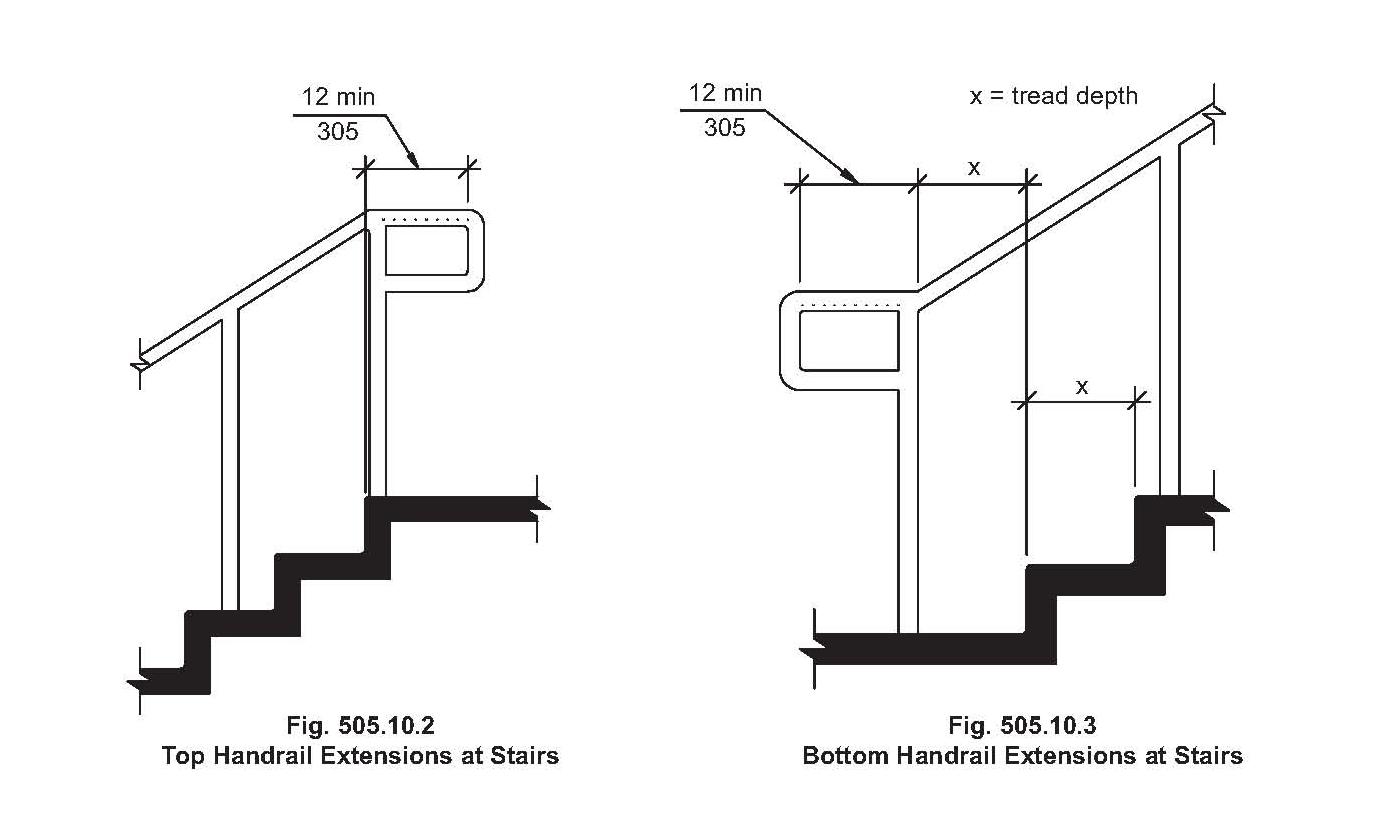Outdoor Step Safety: Decoding Handrail Regulations
Stepping out into the fresh air, whether onto a porch, deck, or garden staircase, should be a seamless and safe experience. But have you ever stopped to consider the crucial role handrails play in ensuring that safety? We often overlook these seemingly simple structures, yet they are vital for preventing falls and ensuring accessibility, particularly for children, the elderly, and those with mobility challenges. Understanding the codes and regulations surrounding outdoor step handrail installation is key to creating a safe and compliant outdoor environment.
Outdoor stair handrail requirements aren't arbitrary; they stem from years of experience and analysis of accident data. These regulations, often incorporated into building codes, aim to minimize risks by establishing standardized dimensions, materials, and installation practices. Ignoring these guidelines can lead not only to safety hazards but also potential legal liabilities. Navigating these codes can feel complex, but breaking them down into manageable segments can make the process much less daunting.
The historical development of handrail regulations reflects a growing understanding of human factors and safety needs. Early building codes may have provided rudimentary guidance, but as our understanding of ergonomics and accessibility evolved, so did the specificity and comprehensiveness of these codes. Today, these regulations often address aspects like handrail height, graspability, continuity, and load-bearing capacity, all crucial elements in ensuring their effectiveness.
One of the most significant issues surrounding outdoor step handrail codes is ensuring compliance. Homeowners undertaking DIY projects might be unaware of the specific regulations in their area, while even experienced contractors can sometimes overlook critical details. Misinterpreting or neglecting these codes can compromise safety and lead to costly rectifications later. Understanding the specific requirements for your location is essential, and consulting with local building authorities can provide clarity and prevent future problems.
A key definition within handrail codes revolves around "graspability." This refers to the handrail's ability to be firmly gripped and held onto. Regulations often specify the diameter or cross-sectional dimensions of the handrail to ensure a comfortable and secure grip for users of all ages and hand sizes. For example, a handrail that is too thin or too thick can be difficult to grasp, increasing the risk of a fall.
Benefit 1: Enhanced Safety: Properly installed handrails significantly reduce the risk of falls, particularly on wet or icy steps. For example, a sturdy handrail can prevent a stumble from turning into a serious fall. Benefit 2: Improved Accessibility: Handrails provide crucial support for individuals with mobility issues, allowing them to navigate stairs more easily and independently. For instance, someone with arthritis might find it painful to climb stairs without a handrail to lean on. Benefit 3: Code Compliance: Adhering to handrail codes ensures your property meets legal requirements, avoiding potential fines or legal issues.
Action Plan: 1. Research local building codes. 2. Measure your steps and plan handrail placement. 3. Choose appropriate materials. 4. Install handrails securely. 5. Inspect regularly for any damage or wear.
Advantages and Disadvantages of Following Handrail Codes
| Advantages | Disadvantages |
|---|---|
| Increased Safety | Initial Cost |
| Improved Accessibility | Maintenance |
| Legal Compliance | Design Limitations (in some cases) |
Best Practice 1: Use durable materials like treated lumber or metal. 2: Ensure handrails are securely fastened to sturdy posts. 3: Maintain a consistent height for the handrail along the entire staircase. 4: Provide adequate clearance between the handrail and any walls or obstructions. 5: Regularly inspect and maintain handrails to ensure their continued effectiveness.
FAQ 1: What is the required height for outdoor handrails? Answer: This varies by local code, but typically falls between 34 and 38 inches. FAQ 2: What materials are acceptable for handrails? Answer: Common materials include wood, metal, and composite materials. FAQ 3: Do I need handrails on both sides of the steps? Answer: This often depends on the width of the staircase. FAQ 4: What is the maximum spacing between handrail supports? Answer: Codes usually specify maximum spacing to ensure structural integrity. FAQ 5: Are there specific requirements for handrail endings? Answer: Yes, handrails should extend beyond the top and bottom steps to provide additional support. FAQ 6: Can I install handrails myself? Answer: While possible, it's recommended to consult with a professional for complex installations. FAQ 7: How often should I inspect my handrails? Answer: Regular inspections, at least annually, are recommended to identify any damage or wear. FAQ 8: Where can I find my local building codes? Answer: Contact your local building department or municipality.
Tips and Tricks: Consider using contrasting colors for handrails to improve visibility, especially for those with visual impairments. Choose materials that are resistant to weather and require minimal maintenance.
In conclusion, understanding and adhering to handrail regulations for outdoor steps is paramount for ensuring the safety and accessibility of your outdoor spaces. While navigating these codes might seem complex, the benefits of compliance far outweigh the effort. By prioritizing proper handrail installation, you contribute to a safer environment for everyone, reducing the risk of falls and providing essential support for those who need it most. Taking the time to research, plan, and execute a compliant handrail installation is an investment in the well-being of your family, guests, and anyone who uses your outdoor stairs. Remember, a safe and accessible outdoor space is a welcoming and enjoyable space for all. Start your research today and make your outdoor steps safer for everyone.
Level up your game the ultimate guide to pittsburghs video game stores
Unlocking the secrets of the ford super duty lariats weight towing power and payload explained
Transform your bedroom with farrow and ball green blue














